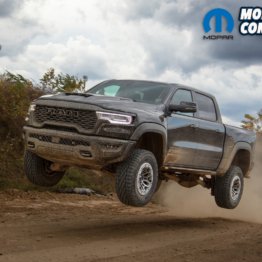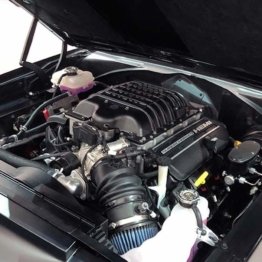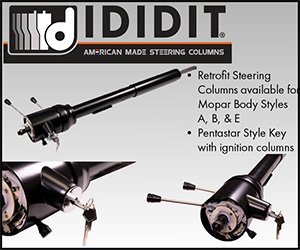
On Sunday, I planed to stake-out and gorge myself at my closest Buffalo Wild Wings. I’m a firm believer that big events, like the Super Bowl, are best enjoyed as a shared experience with others. And it was my plan to gauge patrons reactions to the commercials and even conduct a few short video reactions to the expected ad blitz from FCA. There was one problem with that plan. On Friday, FCA released statement saying they were not going to advertise in this year’s Super Bowl, preferring instead to pursue a digital social media strategy. You know what the say, “The best laid plans…”
Every year, since 2009, during the depths of Chrysler’s bankruptcy, Chrysler, Chrysler Group, and FCA have been big-time Super Bowl advertisers, some years on a par with Budweiser. It started with the groundbreaking 2011 “Imported from Detroit” spot by Eminem for the Chrysler 200, the 2012 Clint Eastwood “It’s Halftime in America” commercial, the memorable 2013 “Farmers” Paul Harvey spot for Ram, the 2014 spots featuring Bob Dylan in the “Imported from Detroit II” visual essay and the “Strike” spot for the Maserati Ghibli, and finally, two spots last year, the Jeep black and white “Portraits” video celebrating its 75-year history and heritage and the very controversial spot for Ram which used a Martin Luther King sermon about greatness, grace, and love as a voice over. This is the body of work of FCA Chief Marketing Officer Olivier François who has masterminded – many in the advertising world say micromanaged – some of the most groundbreaking yet polarizing long-form Super Bowl automotive commercials of the past decade.
That’s what made FCA’s absence from the big game this year, puzzling. Maybe it had something to do with ad time costing upwards of $5 million for every 30 seconds. FCA was expected to air up to five ads, one each for Jeep and Ram more than a minute long. That would have been a $30 million ad buy. (There is some speculation that FCA made the ad buy but at the very last minute pulled out.) CBS, this year’s broadcaster sold 90% of its ad inventory and ran several spots for its own programming during the game, indicating that it was not a sell out.
The game was viewed by 100,000,000 in the US, its lowest ratings since 2009, possibly because the Patriots are generally unpopular outside of New England and that many feel that their opponent should have been the New Orleans Saints who would have been a stronger opponent than the Los Angeles Rams.
So let’s take a look at the timeline and the spots that ultimately, didn’t run.
Staring last Tuesday, FCA aired a number of what they called “Big Game Blitz” videos online and in its social media channels as teasers for spots they would likely broadcast during this year’s Super Bowl. Two spots were stood out, for different reasons. One, for Ram, spoke to what appeared to be single parenthood with actor Jeremy Renner looking over his shoulder to his daughter in the back seat, implying she could be anything she wanted to be when she grew up.
It had a bit of a #metoo feel to it. Is this how you read the spot? Judging from the comments on the official Ram page, this one had a bit too much virtue signaling for many Ram owners or potential buyers. A lot of comments referenced that “my wife’s boyfriend just bought a new Ram” or compared it to the recent Gillette ad that went viral but I didn’t see running during the Super Bowl. Maybe they thought the widely panned, man-hating ad had already done enough damage to the Gillette brand.
The other was for Jeep and not the spot that sparked some pregame outrage among Jeep purists (see first video below at the end of the text) when it showed an apparently restorable 1963 Jeep Gladiator being placed in a crusher and emerging as a 2021 Jeep Gladiator. (The spot came with a disclaimer that the 1963 Jeep Gladiator was bought from a scrap vehicle website and was not restorable.) But it was this spot, with the band OneRepublic’s rendition of the Star Spangled Banner, showing how the Jeep brand has been intertwined in the hearts and minds of Americans since World War Two, that broke through the clutter.
I thought this was an outstanding spot with terrific imagery that paired up with the brand’s values. As the game dragged on into the fourth quarter, tied at 3-3, all I could think of the impact this spot would have had on its intended audience of 100,000,000 had it run. Its themes were America, patriotism, and what brings us together as a nation rather than what pulls us apart. It would have resonated with many, if not most Americans viewing the game. It would have easily been the most political ad to air in this year’s game. But in our increasingly polarized times, maybe Olivier François knew what he was doing and that his digital-only, social media strategy, might have been the best road to take. Certainly, it was less costly.
Most observers say that this year’s crop of Super Bowl ads, both automotive and non-automotive played it safe and were for the most part, uninspiring. I would agree with that assessment as only the Kia Telluride spot standing out among auto advertisers with its decidedly “big” Ram-esque feeling. Its message was that the Telluride is built in West Point, Georgia, and is “American,” a theme Toyota has been very successful using over the past 30-plus years. (But the Telluride spot came in for substantial criticism for portraying those living in rural Georgia as impoverished rednecks, an unfortunate byproduct when you get edgy and push the advertising envelope.) This overall feel of this spot should come as no surprise given that Kia’s Vice President of Marketing, is Saad Chehab, who worked with FCA’s Olivier François from 2009 to 2015 on several of its most memorable Super Bowl ads.
Was the digital-only strategy a success for FCA? Only time will tell if it moves the sales needle. It should be noted that only the Jeep/OneRepublic spot has generated huge viewership numbers, about 55 million views as this is written, half as many who actually watched the Super Bowl. It certainly seems with that spot, FCA, and Jeep especially, got a huge return on investment. Here are the rest of the FCA “Big Game Blitz” ads for you to view:
https://www.youtube.com/watch?v=Naq2yFTwA_c













 Mopar Connection Magazine – The ONLY Daily Mopar Magazine © 2024. All Rights Reserved. Mopar Connection Magazine is the ONLY daily Mopar Magazine bringing you the latest Mopar news, technology, breaking news, and Mopar related events and articles. Find out the latest information about Mopar, Mopar products and services, stay up to date on Mopar enthusiast news, dealership information and the latest Mopar social media buzz! Sign up for the Mopar Connection Magazine newsletter for the latest information about new products, services and industry chatter. Mopar Connection Magazine is the best and only source you need to be a Mopar industry insider!
Mopar Connection Magazine – The ONLY Daily Mopar Magazine © 2024. All Rights Reserved. Mopar Connection Magazine is the ONLY daily Mopar Magazine bringing you the latest Mopar news, technology, breaking news, and Mopar related events and articles. Find out the latest information about Mopar, Mopar products and services, stay up to date on Mopar enthusiast news, dealership information and the latest Mopar social media buzz! Sign up for the Mopar Connection Magazine newsletter for the latest information about new products, services and industry chatter. Mopar Connection Magazine is the best and only source you need to be a Mopar industry insider! by
by